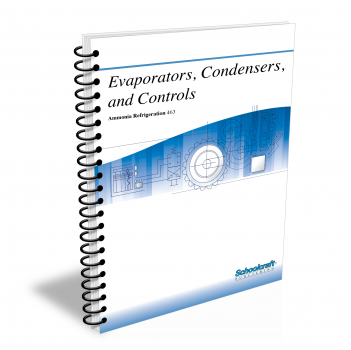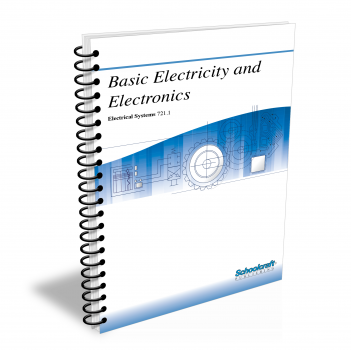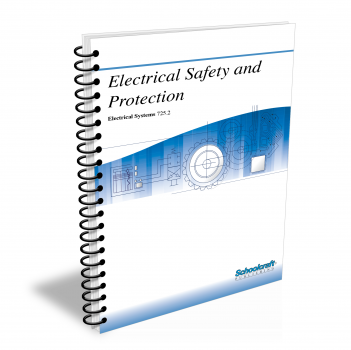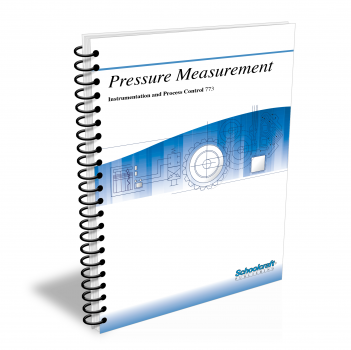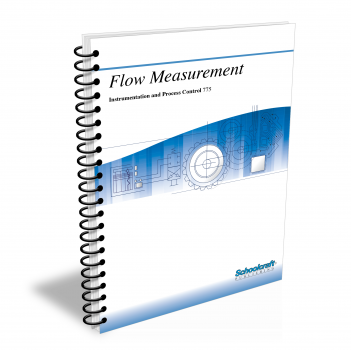Air-Handling Systems
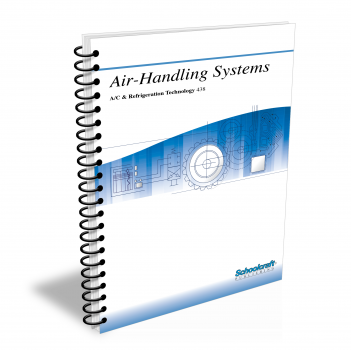
Course Number: 438
The Air-Handling Systems textbook begins with coverage of airflow basics, including how air moves, types of airflow, and pressure relationships. It compares and contrasts various types of fans and fan motors, examines types of ducts, fittings, connections, insulation, and terminal devices, covers various methods of cleaning and filtering air, and explains balancing and troubleshooting the air-handling system. The textbook concludes with information on indoor air quality and sick building syndrome.
Does your curriculum require additional topics not included in this textbook? Build a customized version of the Air-Handling Systems textbook below.
Recommended Contact Hours – 12
Preview a Chapter
Available Supporting Material
- Table of Contents
- Exam Copies
- Suggested Titles
Table of Contents
Chapter 1: Air Movement and Distribution
Topics: Air handling system; Comfort, process air conditioning; Heat and moisture transport; How air moves; Types of airflow; Pressure relationships; Controlled ventilation and pressurization; Dual-duct systems; System velocity
Learning Objectives:
- List the variables controlled by an air-handling system.
- Define comfort and explain how to predict whether or not people in a space will be comfortable.
- Define the following terms: laminar flow, turbulent flow, streamlining, and eddy currents.
- Differentiate between static pressure, velocity pressure, and total pressure in an air-distribution system.
- Compare a dual-duct system to a single-duct system in both structure and operation.
Chapter 2: Fans and Fan Motors
Topics: Fan construction; Centrifugal and axial-flow fans; Fan performance curves; System characteristics; Preventive maintenance for fans; Impeller maintenance; Belt, drive-train, and bearing maintenance
Learning Objectives:
- Describe the two basic types of fans used in air-conditioning systems.
- Define the terms system characteristic and point of operation.
- Explain why a knowledge of fan laws and performance curves is necessary when altering an air-handling system.
- Describe preventive-maintenance procedures for typical fans.
- Explain how to replace the bearings in a centrifugal fan.
Chapter 3: Ductwork Types, Fabrication, and Repair
Topics: Types of ducts; Duct designations, fittings, and connections; Insulation; Terminal devices; Fabricating sheet metal ducts; Duct reinforcement; Duct maintenance
Learning Objectives:
- Define the term aspect ratio.
- Compare and contrast a radial duct system and an extended plenum system.
- Describe the structure and purpose of dampers and turning vanes.
- Identify a variety of fittings and connections used in a sheet metal ductwork system.
- Explain how and why ducts are insulated and reinforced.
- Identify common types of sheet metal seams and describe how each is fashioned.
- Explain the basic servicing and inspection procedures for ductwork systems.
Chapter 4: Air Filtration
Topics: Mechanical air filters; Service schedules; Servicing impingement filters; Replacing dry media filters; Installing HEPA filters; Electronic air cleaners
Learning Objectives:
- Explain the function of an air filter.
- Describe the two main types of mechanical air filters.
- Explain how to establish a service schedule for air filters.
- Explain how to clean and/or replace the filters in your HVAC system.
- Explain the operation of electronic air cleaners and tell how they are serviced.
Chapter 5: Air System Balancing and Troubleshooting
Topics: Measuring instruments; Pretest data collection; Preparing the system; Measuring and adjusting the main airflow, branch ducts, registers, and diffusers; Troubleshooting
Learning Objectives:
- Explain why air-handling systems need to be balanced.
- Describe the instruments used to test and balance an air-handling system.
- Demonstrate how to measure velocity pressure and show how airflow rates are calculated from these pressure readings.
- Describe a pitot-tube traverse.
- Explain in step-by-step fashion how to test and balance an air-handling system.
- Name common complaints related to air-handling systems and give common causes.
Chapter 6: Indoor Air Quality and Sick Building Syndrome
Topics: Sick building syndrome (SBS) characteristics, contributors; HVAC systems as contaminant sources; Pollutant pathways; Odors and contamination, Building-related illness
Learning Objectives:
- Discuss the characteristics of sick building syndrome (SBS).
- Describe the process for investigating an SBS complaint and explain how to conduct a facility site review.
- Discuss ways a facility can minimize the probability of perceived SBS problems.
- Discuss internal and external SBS contributors, including HVAC systems, and discuss ways to eliminate or reduce the problems.
- Describe specific ways to control particulates, odors, and other contaminants.
- Define the abbreviations SBS, IAQ, BRI, VOC, and MCS.
Request Exam Copies
Exam Copies
Ready to see a copy of our textbooks? After selecting which textbooks you’d like to review for your course, you can submit your request by either logging in or creating an account so we know where to ship your exam copies. A representative from Schoolcraft will contact you to confirm and finish processing your request.
Exam copies are always free and yours to keep.
Selected Exam Copies
none selected
* Maximum of five copies can be ordered
